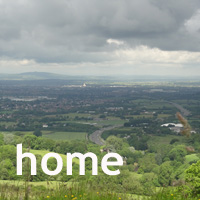Walk with us in Hamburg
 Saturday, January 3, 2015 at 3:53PM
Saturday, January 3, 2015 at 3:53PM
It’s a chilly morning, but there’s not many people about yet (even though it’s almost 10). Grab your hat, gloves and put on your comfy shoes and come, explore Hamburg with us. Our first stop will be the station, just down the street there, where the Tourist Information office can be found.
Needless to say, it’s on the diagonally opposite corner of the station and since we can’t cross the tracks, it takes a while to get there.
We cross the bridges on the way there, but coming back we go down onto a platform and up the other side, though I fear we’re not really supposed to do that without a valid train ticket. Oooer – but nobody sees us and we get away with it!
We now have our five-day Hamburg card and intend to make the most of it.
First of all, we’re going to walk, though. Leaving the station and walking a couple of blocks we soon find ourselves crossing the inner ring road. We’re following the walking tour suggested in our guidebook which begins in the warehouse district.
Walking along Steinstrasse, we notice the ugly church a little further along. It stands amongst blocks of offices, built of bricks in a style our guidebook tells us is typical of Hamburg.
Just as we are looking around to take note of them, we spot the Sprinkenhof at the end of a side street, and a little further along, we turn left towards another notable building
The Chilehaus was there in front of us and tempted in through the archway, we couldn’t resist taking a closer look.
The inner courtyard was striking, with beautiful brickwork details and high walkways on the upper floors.
The designs were fascinating and rewarded a closer look, so we stayed a while gazing up at them and taking a few photographs.
Having strayed from the guidebook route, however, we didn’t realise until now that we missed the main feature of the Chilehaus – reminiscent of our favourite Flatiron - after all of that! we will just have to return…
Onward, then, considering “brick expressionist architecture” for a while, we wandered through a very quiet business district. I suppose Saturday morning is a good time to explore the area.
The next building of note in our book was the Afrikahaus, built by a shipping company in 1899 with a strong African theme.
The warrior by the gate confirms that, as do the two elephants in the courtyard.
We are pleased to see the name of the company which commissioned the building, Woermann, still there amongst the nameplates. Rather satisfying, that.
Anyway, onwards, over the street and we’ll walk over the oldest bridge in the city. What do you mean, you can’t see a bridge? (well, no, I can’t, either)
But it is there, with a figure (a bishop and a duke) on each side and was first mentioned in 1266, we read, though this particular structure is much newer than that, of course.
Standing in the middle of the bridge we get our first glimpse of the canal network in the city, for although we were by the waterfront last night, at the Weisserzauber market, we’ve not really felt as though we were in an historic port so far.
Just over the bridge, we find the remains of the St Nikolai church, left in ruins as a memorial following the extensive bombing raids on Hamburg during WW2.
There’s a lift up what remains of the tower and fine views of the city are promised but we decline the offer and content ourselves with looking around what is left of the nave.
We read that there have been several structures on this site, the last one being designed by George Gilbert Scott, to whom there is a small memorial in the corner.
Time to move on, then, walking along Willy Brand Strasse towards the waterfront.
Time for a bit of sustenance though, don’t you think? I just happen to have a bag of our favourite sweets in my pocket!
See, had we not stopped for those, I’d not have noticed that little fountain in the middle of the graffiti-strewn square. A little gem in the urban landscape marks the end of the first part of our city walk, but join us in my next post to continue to the Hafenstadt and beyond.
 Germany in
Germany in  fun,
fun,  travelling
travelling 







Reader Comments